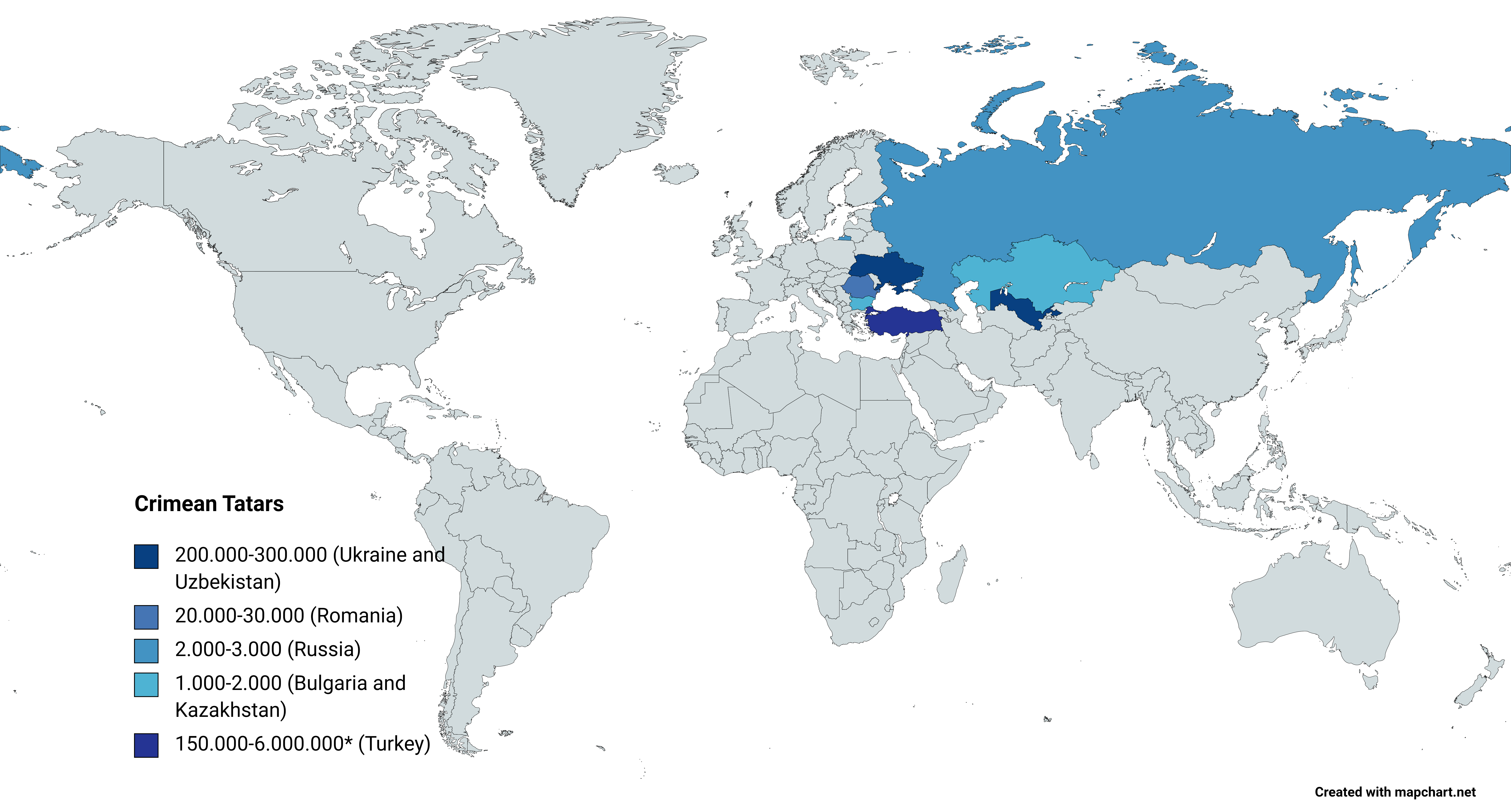|
Sirko's Campaign (1673)
The Sirko's Eastern Campaign were a series of raids carried out by the Zaporozhian Cossacks led by Ivan Sirko against the Crimean Khanate, Nogai Horde and Ottoman Empire that took place in May 1673. Part of the Ottoman-Cossack Conflict. Prelude Tatars were returning from Kamenets-Podolsky to Crimea while passing through the lands of Zaporozhian Cossacks, they stole their cattle and abducted several people in process. Ivan Sirko found out about this and wanted to take revenge on Tatars for their crimes against Rus' people. He organised a punitive campaign against Crimean Khanate, Nogai Horde and Ottoman Empire. George Konissky. History of Ruthenians. Part 2 (Chapter 5). Campaign Budjak Nogai Tatars often took part in raids on Eastern Europe together with Crimean Tatars. Sirko went to the lands of Nogai Horde, specifically Budjak at the start of his campaign, devastating them before heading with Cossacks to Aq Kirmān. Aq Kirmān Aq Kirmān (Bilhorod-Dnistrovsk ... [...More Info...] [...Related Items...] OR: [Wikipedia] [Google] [Baidu] |
Zaporozhian Cossacks
The Zaporozhian Cossacks (in Latin ''Cossacorum Zaporoviensis''), also known as the Zaporozhian Cossack Army or the Zaporozhian Host (), were Cossacks who lived beyond (that is, downstream from) the Dnieper Rapids. Along with Registered Cossacks and Sloboda Cossacks, Zaporozhian Cossacks played an important role in the history of Ukraine and the ethnogenesis of Ukrainians. The Zaporozhian Sich grew rapidly in the 15th century from serfs fleeing the more controlled parts of the Polish–Lithuanian Commonwealth. The least controlled region, that was located between the Dniester and mid-Volga was first known from the 15th century as the '' Wild Fields'', which was subject to colonization by the Zaporozhian Cossacks.Shcherbak, V.Wild Field (ДИКЕ ПОЛЕ). ''Encyclopedia of History of Ukraine''. 2004 Zaporozhian Host became established as a well-respected political entity with a parliamentary system of government. During the course of the 16th, 17th and well into the 18th c ... [...More Info...] [...Related Items...] OR: [Wikipedia] [Google] [Baidu] |
Crimean Tatars
Crimean Tatars (), or simply Crimeans (), are an Eastern European Turkic peoples, Turkic ethnic group and nation indigenous to Crimea. Their ethnogenesis lasted thousands of years in Crimea and the northern regions along the coast of the Black Sea, uniting Mediterranean basin, Mediterranean populations with those of the Eurasian Steppe.''Агджоян А. Т., Схаляхо Р. А., Утевская О. М., Жабагин М. К., Тагирли Ш. Г., Дамба Л. Д., Атраментова Л. А., Балановский О. П.'Генофонд крымских татар в сравнении с тюркоязычными народами Европы, 2015 Genome-wide study of the Crimean Tatars unveiled connections between them and the genomes of individuals from the Steppe during the Bronze Age, specifically those associated with the Yamnaya culture, Yamnaya archaeological culture. Until the 20th century, Crimean Tatars were the most populous demographic cohort ... [...More Info...] [...Related Items...] OR: [Wikipedia] [Google] [Baidu] |
Battles Involving The Crimean Khanate
A battle is an occurrence of combat in warfare between opposing military units of any number or size. A war usually consists of multiple battles. In general, a battle is a military engagement that is well defined in duration, area, and force commitment. An engagement with only limited commitment between the forces and without decisive results is sometimes called a skirmish. The word "battle" can also be used infrequently to refer to an entire operational campaign, although this usage greatly diverges from its conventional or customary meaning. Generally, the word "battle" is used for such campaigns if referring to a protracted combat encounter in which either one or both of the combatants had the same methods, resources, and strategic objectives throughout the encounter. Some prominent examples of this would be the Battle of the Atlantic, Battle of Britain, and the Battle of France, all in World War II. Wars and military campaigns are guided by military strategy, whereas batt ... [...More Info...] [...Related Items...] OR: [Wikipedia] [Google] [Baidu] |
Battles Involving The Ottoman Empire
List of the main battles in the history of the Ottoman Empire are shown below. The life span of the empire was more than six centuries, and the maximum territorial extent, at the zenith of its power in the second half of the 16th century, stretched from central Europe to the Persian Gulf and from the Caspian Sea to North Africa. The number of battles the empire fought is quite high. But here only the more important battles are listed. Among these, the battles fought in the 20th century ( Turco-Italian War, Balkan Wars, and World War I ) as well as the sieges (like the sieges of Constantinople, Cairo, Belgrade, Bagdad, etc.) which most lists include as battles are not shown except in cases where the siege is followed by a battle (i.e. Vienna, Khotyn, Plevna).Prof.Dr.Yaşar Yücel-Prof.Dr.Ali Sevim: ''Türkiye Tarihi II, III, IV'', AKDTYK Yayınları, İstanbul, 1990, List of battles ;Color legend for the location of the battle The sultans Sultan (; ', ) is a positi ... [...More Info...] [...Related Items...] OR: [Wikipedia] [Google] [Baidu] |
Conflicts In 1673
Conflict may refer to: Social sciences * Conflict (process), the general pattern of groups dealing with disparate ideas * Conflict continuum from cooperation (low intensity), to contest, to higher intensity (violence and war) * Conflict of interest, involvement in multiple interests which could possibly corrupt the motivation or decision-making * Cultural conflict, a type of conflict that occurs when different cultural values and beliefs clash * Ethnic conflict, a conflict between two or more contending ethnic groups * Group conflict, conflict between groups * Intragroup conflict, conflict within groups * Organizational conflict, discord caused by opposition of needs, values, and interests between people working together * Role conflict, incompatible demands placed upon a person such that compliance with both would be difficult * Social conflict, the struggle for agency or power in something * Work–family conflict, incompatible demands between the work and family roles of ... [...More Info...] [...Related Items...] OR: [Wikipedia] [Google] [Baidu] |
1673 In Europe
Events January–March * January 22 – Impersonator Mary Carleton is hanged at Newgate Prison in London, for multiple thefts and returning from penal transportation. * February 10 – Molière's ''comédie-ballet'' ''The Imaginary Invalid'' premiers in Paris. During the fourth performance, on February 17, the playwright, playing the title rôle, collapses on stage, dying soon after. * March 29 – Test Act: Roman Catholics and others who refuse to receive the sacrament of the Church of England cannot vote, hold public office, preach, teach, attend the universities or assemble for meetings in England. On June 12, the king's Catholic brother, James, Duke of York, is forced to resign the office of Lord High Admiral because of the Act. April–June * April 27 – ''Cadmus et Hermione'', the first opera written by Jean-Baptiste Lully, premières at the Paris Opera in France. * May 17 – In America, trader Louis Joliet and Jesuit missionary- ... [...More Info...] [...Related Items...] OR: [Wikipedia] [Google] [Baidu] |
Battle Of Sich (1674)
The Battle of Sich took place between the Ottoman-Crimean army and the Zaporozhian Cossacks, during the Ottoman-Crimean campaign into the Sich, at night on 19 December 1674. Detailed description of this battle only appears in Velychko's chronicle. Prelude Sultan Mehmed IV and Khan Selim I Giray planned a campaign into the Sich with the goal of destroying it, thus ending the frequent Cossack campaigns and raids of Ivan Sirko into their lands. In autumn of 1674, Sultan sent 15,000 Ottoman Janissaries to Crimea. In total, 15,000 Janissaries and 40,000 Tatars were to take part in the campaign. Battle Turkish-Tatar army launched their campaign into the Sich once the rivers froze, at night to avoid getting detected. The Khan used captured Cossacks to gain access into Sich, expecting to take Cossacks by surprise as they were asleep. However, they were noticed by a Cossack named ''Shevchuk'' or ''Chefchika'', who alerted his comrades, and made the presence of intruders in the ... [...More Info...] [...Related Items...] OR: [Wikipedia] [Google] [Baidu] |
Battle Of Khotyn (1673)
The Battle of Khotyn or Battle of Chocim, also known as the Hotin War, took place on 11 November 1673 in Khotyn, where the forces of the Polish–Lithuanian Commonwealth under the Hetmans of the Polish–Lithuanian Commonwealth, Grand Hetman of the Polish Crown John III Sobieski, John Sobieski defeated Ottoman Empire forces, with Moldavian and Wallachian regiments, led by Hüseyin Pasha. It reversed the fortunes of the previous year, when Commonwealth weakness led to the signing of the Treaty of Buchach, and allowed John Sobieski to win the upcoming Royal elections in Poland, royal election and become the King of Poland. Name Khotyn (; ; ; ) was conquered and controlled by many states, resulting in many name changes. Other name variations include ''Chotyn'', or ''Choczim'' (especially in Polish language, Polish). Battle The Polish-Lithuanian army, numbering some 30,000 soldiers, under the command of Grand Crown Hetman John III Sobieski, John Sobieski, besieged the Khotyn fo ... [...More Info...] [...Related Items...] OR: [Wikipedia] [Google] [Baidu] |
Bender, Moldova
Bender (, ) or Bendery (, ; ), also known as Tighina ( mo-Cyrl, Тигина, links=no), is a city within the internationally recognized borders of Moldova under ''de facto'' control of the unrecognized Transnistria, Pridnestrovian Moldavian Republic (Transnistria) (PMR) since 1992. It is located on the western bank of the river Dniester in the historical region of Bessarabia. Together with its suburb Proteagailovca, the city forms a municipality, which is separate from Administrative-Territorial Units of the Left Bank of the Dniester, Transnistria (as an administrative unit of Moldova) according to Moldovan law. Bender is located in the buffer zone established at the end of the 1992 War of Transnistria. While the Joint Control Commission has overriding powers in the city, Transnistria has ''de facto'' administrative control. The Tighina Fortress, fortress of Tighina was one of the important historic fortresses of the Principality of Moldova until 1812. Name First mentioned in ... [...More Info...] [...Related Items...] OR: [Wikipedia] [Google] [Baidu] |
Ochakiv
Ochakiv (, ), also known as Ochakov (; ; or, archaically, ) and Alektor (), is a small city in Mykolaiv Raion, Mykolaiv Oblast (region) of southern Ukraine. It hosts the administration of Ochakiv urban hromada, one of the hromadas of Ukraine. Its population is Of the 14,000 people who lived in Ochakiv before the war, only half remained. For many years the city fortress served as a capital of the Ottoman province (eyalet) of Özu (Silistria). Geography The city is located at the mouth of Dnieper, on the banks of the Dnieper-Bug Estuary. Between the Cape of Ochakiv (northern bank) and the Kinburn Spit (southern bank) there are only . The Ochakiv and Kinburn fortresses controlled the entrance to Dnieper and Bug. History Establishment and names The strip of land on which Ochakov is located was inhabited by Thracians and Scythians in ancient times. It was known as a part of Great Scythia. In the 7th and 6th centuries BC, Greek colonists had founded a commercial colony town, ... [...More Info...] [...Related Items...] OR: [Wikipedia] [Google] [Baidu] |




